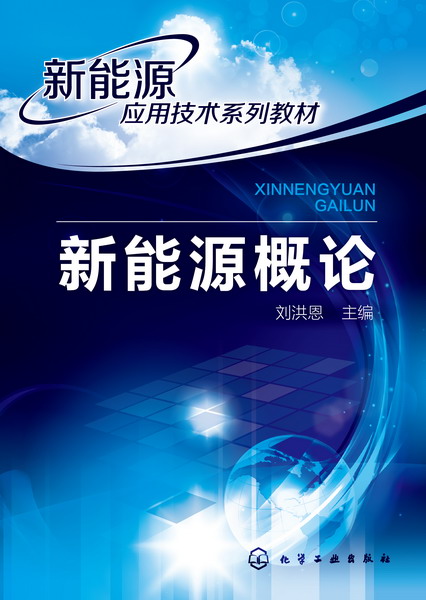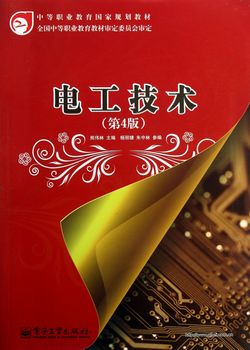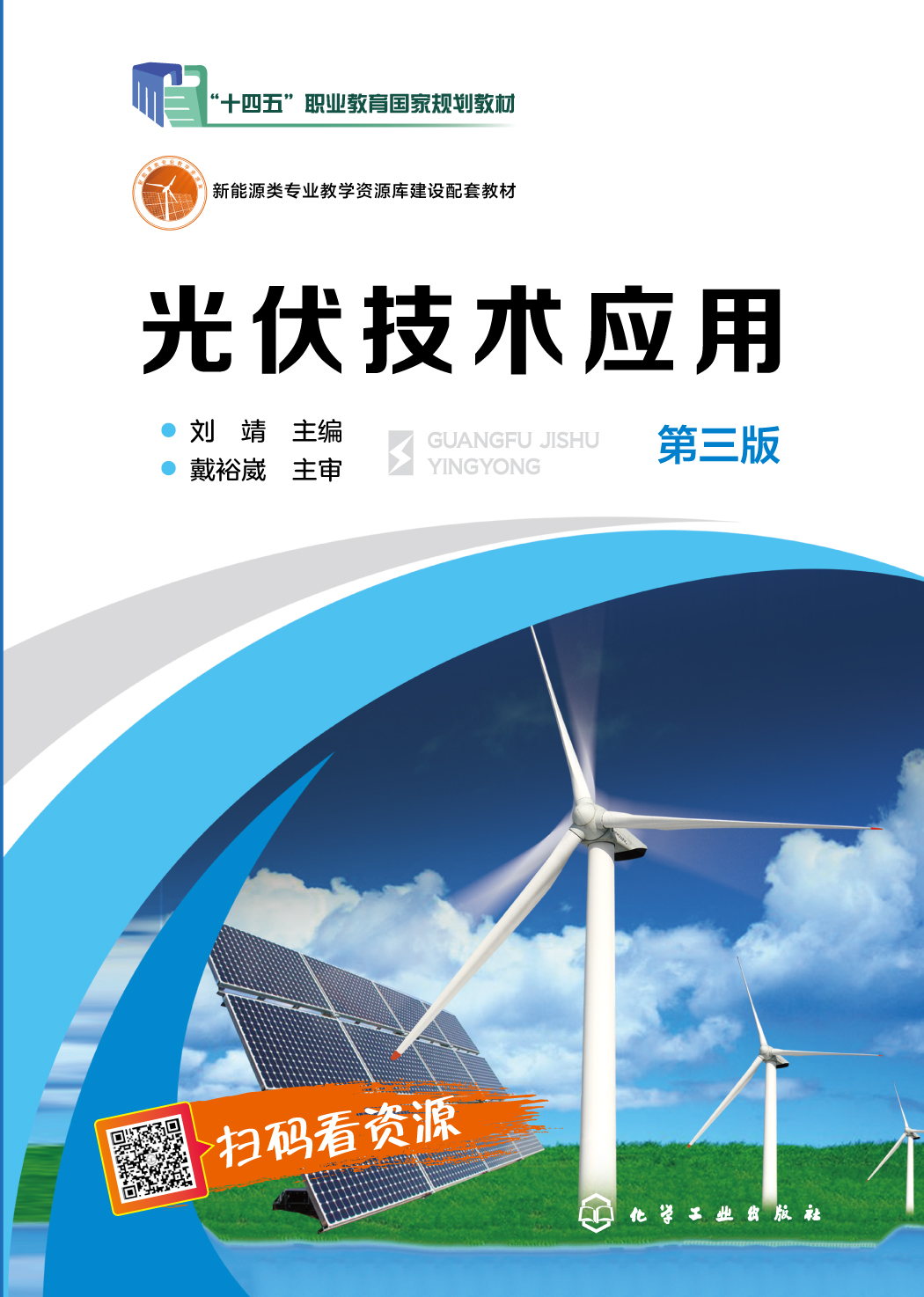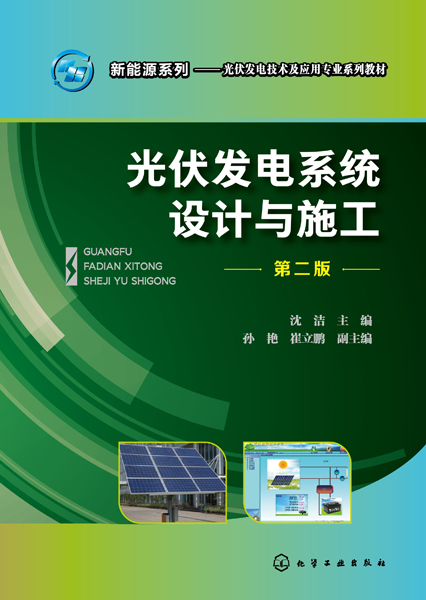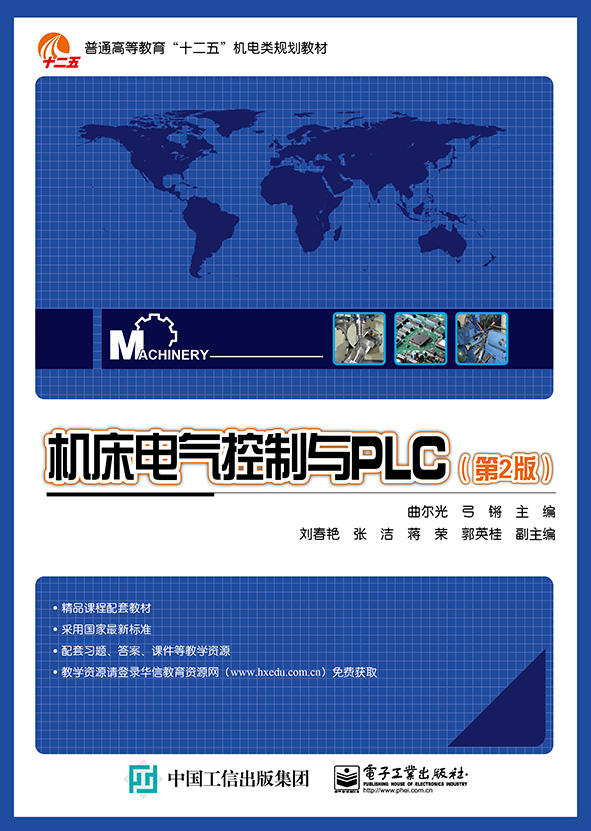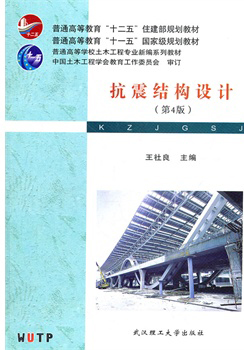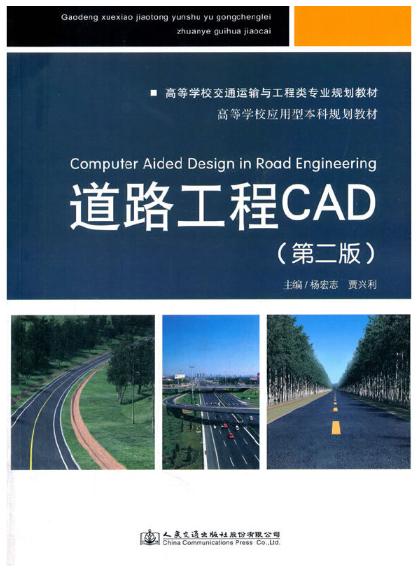光伏发电系统集成
定价:¥30.00
作者: 邱美艳
出版时间:2019-08
出版社:西安电子科技大学出版社
“十四五”职业教育国家规划教材“十三五”职业教育国家规划教材
- 西安电子科技大学出版社
- 9787560651750
- 1-1
- 285662
- 61203555-0
- 平装
- 16开
- 2019-08
- 246
- 176
- TM615
- 太阳能发电
- 高职
内容简介
本书是在天津中德应用技术大学2017年“一流应用技术大学”建设系列教材编委会指导下,根据教育部新的职业教育教学改革精神,以行业企业岗位技能需求为中心,与经验丰富的企业工程师共同开发的。本书共设四个项目,分别是太阳能手机充电系统设计、太阳能路灯系统设计、家用光伏电站设计、大型并网光伏发电系统设计,用工作过程系统化的方式介绍了不同类型的光伏发电系统如何设计选型与配置,每个项目后均附有拓展的应用实例。
本书注重培养学生光伏发电系统设计的应用技能,由项目案例导入任务设计,并在内容中融入工业技术标准,将理论与实际紧密结合,提高学生的职业素养与工程实践能力。
本书可作为高职高专院校光伏相关专业学生的教材,也可作为企业员工的培训教材,还可作为相关人员的学习参考书。
本书提供免费的电子教学课件和微课视频等资源,可扫描书中二维码获取。
本书注重培养学生光伏发电系统设计的应用技能,由项目案例导入任务设计,并在内容中融入工业技术标准,将理论与实际紧密结合,提高学生的职业素养与工程实践能力。
本书可作为高职高专院校光伏相关专业学生的教材,也可作为企业员工的培训教材,还可作为相关人员的学习参考书。
本书提供免费的电子教学课件和微课视频等资源,可扫描书中二维码获取。
目录
项目1 太阳能手机充电系统设计 1
1.1 任务提出 1
1.2 任务解析 2
1.3 太阳能 2
1.3.1 太阳能资源 2
1.3.2 太阳能量的衰减 2
1.3.3 我国太阳能资源分布 3
1.3.4 太阳辐射的计量及峰值日照时数 4
1.3.5 太阳能发电的优缺点 5
1.4 太阳电池 7
1.4.1 结构与工作原理 7
1.4.2 太阳电池分类 9
1.4.3 太阳电池的特性 12
1.4.4 技术参数 15
1.5 充电控制电路 16
1.5.1 直流斩波电路的工作原理 16
1.5.2 降压斩波电路 17
1.5.3 升压斩波电路 18
1.5.4 升降压斩波电路 20
1.6 锂离子电池 21
1.6.1 锂电池的结构与工作原理 21
1.6.2 锂离子电池的参数 22
1.6.3 锂离子电池充放电 23
1.7 任务实施 23
1.7.1 系统方案设计 23
1.7.2 太阳电池组件的选型与计算 24
1.7.3 控制电路设计 25
1.8 应用案例 26
1.8.1 太阳能计算器 26
1.8.2 共享单车供电系统 28
【课后任务】 30
【课后习题】 30
【实训一】 光伏组件测试 31
项目2 太阳能路灯系统设计 33
2.1 任务提出 33
2.2 任务解析 33
2.3 独立光伏发电系统 34
2.3.1 独立光伏发电系统组成 35
2.3.2 独立光伏发电系统分类 36
2.4 光伏控制器 37
2.4.1 光伏控制器基本原理 38
2.4.2 控制器常用电路形式 39
2.5 蓄电池 45
2.5.1 铅酸蓄电池的结构与工作原理 46
2.5.2 铅酸蓄电池的性能参数 48
2.5.3 铅酸蓄电池的充放电控制 50
2.5.4 铅酸蓄电池的命名方法 51
2.5.5 超级电容器 52
2.6 任务实施 54
2.6.1 系统方案设计 54
2.6.2 光伏组件的选型与计算 55
2.6.3 蓄电池选型计算 58
2.6.4 光伏控制器的选型 59
2.7 系统安装与调试 60
2.7.1 太阳能LED路灯的安装 60
2.7.2 系统调试 61
2.8 应用案例 62
2.8.1 内蒙古呼和浩特风光互补路灯设计案例 62
2.8.2 哈尔滨移动通信基站风光互补发电系统设计案例 67
【课后任务】 69
【课后习题】 69
【实训二】 光伏控制器工作原理 70
项目3 家用光伏电站设计 71
3.1 任务提出 71
3.2 任务解析 71
3.3 光伏阵列 72
3.3.1 光伏阵列的定义 72
3.3.2 热斑效应和光伏阵列中的二极管 73
3.3.3 光伏阵列电路 74
3.4 离网逆变器 76
3.4.1 基本工作原理 76
3.4.2 逆变器的分类 77
3.4.3 逆变器基本电路 78
3.4.4 逆变器主要技术参数 81
3.5 支架系统 84
3.5.1 支架分类 84
3.5.2 安装角度设计 87
3.5.3 支架的安装方式 88
3.6 任务实施 91
3.6.1 系统方案设计 91
3.6.2 设计依据与基本原则 91
3.6.3 光伏组件的选型与阵列容量计算 92
3.6.4 蓄电池的选型与计算 95
3.6.5 控制器的选型 97
3.6.6 逆变器的选型 98
3.6.7 支架系统设计 100
3.7 应用案例—移动基站独立供电系统 101
3.7.1 案例概述 101
3.7.2 光伏组件的选型以及容量计算 102
3.7.3 蓄电池的选型与计算 103
3.7.4 电气配置 103
3.7.5 光伏阵列安装设计 104
【课后任务】 105
【课后习题】 105
【实训三】 独立光伏发电系统设计 106
项目4 大型并网光伏发电系统设计 107
4.1 任务提出 107
4.2 任务解析 108
4.3 并网光伏发电系统 108
4.3.1 并网光伏发电系统分类 109
4.3.2 并网光伏发电系统的组成 111
4.4 并网逆变器 117
4.4.1 并网逆变器的工作原理 117
4.4.2 并网逆变器的功能 119
4.4.3 并网逆变器的主要技术参数 120
4.5 防雷与接地设计 121
4.5.1 雷电的形成与基本形式 121
4.5.2 防雷系统基础知识 122
4.5.3 光伏发电系统防雷设计 125
4.5.4 光伏发电系统的接地设计 127
4.6 并网接入设计 128
4.6.1 光伏电站等级及并网要求 128
4.6.2 光伏系统的并网类型 128
4.6.3 并网接入电网要求 129
4.7 任务实施 131
4.7.1 系统方案设计 131
4.7.2 设计依据 132
4.7.3 光伏系统的容量设计 133
4.7.4 光伏系统的结构设计 135
4.7.5 光伏系统的电气设计 136
4.7.6 并网接入设计 139
4.7.7 防逆流设计 139
4.7.8 监控系统设计 140
4.7.9 系统发电量与节能估算 141
4.8 应用案例—10 MW太阳能光伏并网发电系统 141
4.8.1 背景概述 141
4.8.2 光伏系统容量设计 142
4.8.3 光伏系统电气设计 143
4.8.4 系统接入电网设计 146
4.8.5 监控系统设计 147
4.8.6 环境监测仪 148
4.8.7 光伏系统防雷接地装置 148
【课后任务】 149
【课后习题】 149
【实训四】 并网光伏发电系统认识与设计 149
附录1 光储一体化电站项目设计 151
附录2 光伏发电站设计术语 160
参考文献 162
目 录
Contents
Item Ⅰ Design of Solar Cell Phone Charging System 1
1.1 Proposal of Task 1
1.2 Analysis of Task 2
1.3 Solar Energy 2
1.3.1 Solar Energy Resources 2
1.3.2 Attenuation of Solar Energy 2
1.3.3 Distribution of Solar Energy in China 3
1.3.4 Measurement of Solar Radiation and Peak Sunshine Hours 4
1.3.5 Advantages and Disadvantages of Solar Power Generation 5
1.4 Solar Cell 7
1.4.1 Structure and Working Principle of Solar Cells 7
1.4.2 Classification of Solar Cells 9
1.4.3 Characteristics of Solar Cells 12
1.4.4 Technical Parameters 15
1.5 Charging Control Circuit 16
1.5.1 Working Principle of DC Chopper Circuit 16
1.5.2 Buck Chopper 17
1.5.3 Boost Chopper 18
1.5.4 BoostBuck Chopper 20
1.6 Lithium Ion Battery 21
1.6.1 Structure and Working Principle of Lithium Battery 21
1.6.2 Parameters of Lithium Ion Battery 22
1.6.3 Charging and Discharging of Lithium Ion Battery 23
1.7 Implementation of Task 23
1.7.1 System Design 23
1.7.2 Selection and Calculation of PV Module 24
1.7.3 Control Circuit Design 25
1.8 Application Cases 26
1.8.1 Solar Calculator 26
1.8.2 Power Supply System of Shared Bicyles 28
【Afterclass Assignments】 30
【Afterclass Exercises】 30
【Practical Training Ⅰ】 Module Test 31
Item Ⅱ Design of Solar Street Lighting System 33
2.1 Proposal of Task 33
2.2 Analysis of Task 33
2.3 Offgrid Photovoltaic Power Generation System 34
2.3.1 Composition of Offgrid Photovoltaic Power Generation System 35
2.3.2 Classification of Offgrid Photovoltaic Power Generation System 36
2.4 Photovoltaic Controller 37
2.4.1 Basic Principles of Photovoltaic Controller 38
2.4.2 Common Circuit Forms of Controllers 39
2.5 Storage Battery 45
2.5.1 Structure and Working Principle of Leadacid Battery 46
2.5.2 Performance Parameters of Leadacid Batteries 48
2.5.3 Charging and Discharging Control of Leadacid Batteries 50
2.5.4 Naming Method for Leadacid Batteries 51
2.5.5 Supercapacitor 52
2.6 Implementation of Task 54
2.6.1 System Design 54
2.6.2 Selection and Calculation of Photovoltaic Module 55
2.6.3 Selection and Calculation of Battery 58
2.6.4 Selection of Photovoltaic Controller 59
2.7 System Installation and Commissioning 60
2.7.1 Installation of Solar LED Streetlights 60
2.7.2 System Commissioning 61
2.8 Application Cases 62
2.8.1 Design Case of Wind and Solar Streetlights in Hohhot of Inner Mongolia 62
2.8.2 Design Case of WindSolar Hybrid Power Generation System for Harbin Mobile Communication
Base Station 67
【Afterclass Assignments】 69
【Afterclass Exercises】 69
【Practical Training Ⅱ】 Working Principle of Photovoltaic Controller 70
Item Ⅲ Design of Household Photovoltaic Power Station 71
3.1 Proposal of Task 71
3.2 Analysis of Task 71
3.3 Solar Array 72
3.3.1 Definition of Solar Array 72
3.3.2 Hot Spot Effect and Diode in Solar Array 73
3.3.3 Solar Array Circuit 74
3.4 Offgrid Inverter 76
3.4.1 Basic Working Principles 76
3.4.2 Classification of Inverters 77
3.4.3 Basic Circuit of Inverter 78
3.4.4 Main Technical Parameters of Inverter 81
3.5 Bracket Sytem 84
3.5.1 Classification of Bracket Sytem 84
3.5.2 Installation Angle Design 87
3.5.3 Installation Mode of Bracket 88
3.6 Implementation of Task 91
3.6.1 System Design 91
3.6.2 Design Basis and Basic Principles 91
3.6.3 Selection of Module and Calculation of Array Capacity 92
3.6.4 Selection and Calculation of Storage Battery 95
3.6.5 Selection of Controller 97
3.6.6 Selection of Inverter 98
3.6.7 Design of Mounting System 100
3.7 Application Case—Independent Power Supply System for Mobile Base Station 101
3.7.1 Case Overview 101
3.7.2 Selection of Photovoltaic Module and Capacity Calculation 102
3.7.3 Selection and Calculation of Storage Battery 103
3.7.4 Electrical Configuration 103
3.7.5 Design of Photovoltaic Array Installation 104
【Afterclass Assignments】 105
【Afterclass Exercises】 105
【Practical Training Ⅲ】 Design of Independent Photovoltaic Power Generation System 106
Item Ⅳ Design of Large Gridconnected Photovoltaic System 107
4.1 Proposal of Task 107
4.2 Analysis of Task 108
4.3 Gridconnected Photovoltaic System 108
4.3.1 Classification of Gridconnected Photovoltaic System 109
4.3.2 Composition of Gridconnected Photovoltaic System 111
4.4 Gridconnected Inverter 117
4.4.1 Working Principle of Gridconnected Inverter 117
4.4.2 Function of Gridconnected Inverter 120
4.4.3 Main Technical Parameters of Gridconnected Inverter 120
4.5 Lightning Protection and Grounding Design 121
4.5.1 Formation and Basic Form of Lightning 121
4.5.2 Basic Knowledge of Lightning Protection System 122
4.5.3 Lightning Protection Design of Photovoltaic System 125
4.5.4 Grounding Design of Photovoltaic System 127
4.6 Design of Gridconnected Access 128
4.6.1 Photovoltaic Grade and Gridconnection Requirements 128
4.6.2 Gridconnected Type of Photovoltaic System 128
4.6.3 Requirements of Gridconnected to Power Grid 129
4.7 Implementation of Task 131
4.7.1 Sytem Design 131
4.7.2 Design Basis 132
4.7.3 Capacity Design of Photovoltaic System 133
4.7.4 Structural Design of Photovoltaic System 135
4.7.5 Electrical Design of Photovoltaic System 136
4.7.6 Design of Gridconnected Access 139
4.7.7 Design of Backflow Protection 139
4.7.8 Design of Monitoring System 140
4.7.9 System Power Generation and Energy Saving Estimation 141
4.8 Application Case—10MW Solar Photovoltaic Grid Connected Power Generation System 141
4.8.1 Background Overview 141
4.8.2 Capacity Design of Photovoltaic Sytem 142
4.8.3 Electrical Design of Photovoltaic System 143
4.8.4 Design of System Access to Power Grid 146
4.8.5 Design of Monitoring System 147
4.8.6 Environmental Monitor 148
4.8.7 Lightning Protection and Grounding Device for Photovoltaic System 148
【Afterclass Assignments】 149
【Afterclass Exercises】 149
【Practical Training Ⅳ】 Introduction & Design of Gridconnected Photovoltaic Power Generation System 149
Appendix Ⅰ Optical Storage Integrated Power Station 151
Appendix Ⅱ Terminology of Photovoltaic Power Station Design 160
References 162
1.1 任务提出 1
1.2 任务解析 2
1.3 太阳能 2
1.3.1 太阳能资源 2
1.3.2 太阳能量的衰减 2
1.3.3 我国太阳能资源分布 3
1.3.4 太阳辐射的计量及峰值日照时数 4
1.3.5 太阳能发电的优缺点 5
1.4 太阳电池 7
1.4.1 结构与工作原理 7
1.4.2 太阳电池分类 9
1.4.3 太阳电池的特性 12
1.4.4 技术参数 15
1.5 充电控制电路 16
1.5.1 直流斩波电路的工作原理 16
1.5.2 降压斩波电路 17
1.5.3 升压斩波电路 18
1.5.4 升降压斩波电路 20
1.6 锂离子电池 21
1.6.1 锂电池的结构与工作原理 21
1.6.2 锂离子电池的参数 22
1.6.3 锂离子电池充放电 23
1.7 任务实施 23
1.7.1 系统方案设计 23
1.7.2 太阳电池组件的选型与计算 24
1.7.3 控制电路设计 25
1.8 应用案例 26
1.8.1 太阳能计算器 26
1.8.2 共享单车供电系统 28
【课后任务】 30
【课后习题】 30
【实训一】 光伏组件测试 31
项目2 太阳能路灯系统设计 33
2.1 任务提出 33
2.2 任务解析 33
2.3 独立光伏发电系统 34
2.3.1 独立光伏发电系统组成 35
2.3.2 独立光伏发电系统分类 36
2.4 光伏控制器 37
2.4.1 光伏控制器基本原理 38
2.4.2 控制器常用电路形式 39
2.5 蓄电池 45
2.5.1 铅酸蓄电池的结构与工作原理 46
2.5.2 铅酸蓄电池的性能参数 48
2.5.3 铅酸蓄电池的充放电控制 50
2.5.4 铅酸蓄电池的命名方法 51
2.5.5 超级电容器 52
2.6 任务实施 54
2.6.1 系统方案设计 54
2.6.2 光伏组件的选型与计算 55
2.6.3 蓄电池选型计算 58
2.6.4 光伏控制器的选型 59
2.7 系统安装与调试 60
2.7.1 太阳能LED路灯的安装 60
2.7.2 系统调试 61
2.8 应用案例 62
2.8.1 内蒙古呼和浩特风光互补路灯设计案例 62
2.8.2 哈尔滨移动通信基站风光互补发电系统设计案例 67
【课后任务】 69
【课后习题】 69
【实训二】 光伏控制器工作原理 70
项目3 家用光伏电站设计 71
3.1 任务提出 71
3.2 任务解析 71
3.3 光伏阵列 72
3.3.1 光伏阵列的定义 72
3.3.2 热斑效应和光伏阵列中的二极管 73
3.3.3 光伏阵列电路 74
3.4 离网逆变器 76
3.4.1 基本工作原理 76
3.4.2 逆变器的分类 77
3.4.3 逆变器基本电路 78
3.4.4 逆变器主要技术参数 81
3.5 支架系统 84
3.5.1 支架分类 84
3.5.2 安装角度设计 87
3.5.3 支架的安装方式 88
3.6 任务实施 91
3.6.1 系统方案设计 91
3.6.2 设计依据与基本原则 91
3.6.3 光伏组件的选型与阵列容量计算 92
3.6.4 蓄电池的选型与计算 95
3.6.5 控制器的选型 97
3.6.6 逆变器的选型 98
3.6.7 支架系统设计 100
3.7 应用案例—移动基站独立供电系统 101
3.7.1 案例概述 101
3.7.2 光伏组件的选型以及容量计算 102
3.7.3 蓄电池的选型与计算 103
3.7.4 电气配置 103
3.7.5 光伏阵列安装设计 104
【课后任务】 105
【课后习题】 105
【实训三】 独立光伏发电系统设计 106
项目4 大型并网光伏发电系统设计 107
4.1 任务提出 107
4.2 任务解析 108
4.3 并网光伏发电系统 108
4.3.1 并网光伏发电系统分类 109
4.3.2 并网光伏发电系统的组成 111
4.4 并网逆变器 117
4.4.1 并网逆变器的工作原理 117
4.4.2 并网逆变器的功能 119
4.4.3 并网逆变器的主要技术参数 120
4.5 防雷与接地设计 121
4.5.1 雷电的形成与基本形式 121
4.5.2 防雷系统基础知识 122
4.5.3 光伏发电系统防雷设计 125
4.5.4 光伏发电系统的接地设计 127
4.6 并网接入设计 128
4.6.1 光伏电站等级及并网要求 128
4.6.2 光伏系统的并网类型 128
4.6.3 并网接入电网要求 129
4.7 任务实施 131
4.7.1 系统方案设计 131
4.7.2 设计依据 132
4.7.3 光伏系统的容量设计 133
4.7.4 光伏系统的结构设计 135
4.7.5 光伏系统的电气设计 136
4.7.6 并网接入设计 139
4.7.7 防逆流设计 139
4.7.8 监控系统设计 140
4.7.9 系统发电量与节能估算 141
4.8 应用案例—10 MW太阳能光伏并网发电系统 141
4.8.1 背景概述 141
4.8.2 光伏系统容量设计 142
4.8.3 光伏系统电气设计 143
4.8.4 系统接入电网设计 146
4.8.5 监控系统设计 147
4.8.6 环境监测仪 148
4.8.7 光伏系统防雷接地装置 148
【课后任务】 149
【课后习题】 149
【实训四】 并网光伏发电系统认识与设计 149
附录1 光储一体化电站项目设计 151
附录2 光伏发电站设计术语 160
参考文献 162
目 录
Contents
Item Ⅰ Design of Solar Cell Phone Charging System 1
1.1 Proposal of Task 1
1.2 Analysis of Task 2
1.3 Solar Energy 2
1.3.1 Solar Energy Resources 2
1.3.2 Attenuation of Solar Energy 2
1.3.3 Distribution of Solar Energy in China 3
1.3.4 Measurement of Solar Radiation and Peak Sunshine Hours 4
1.3.5 Advantages and Disadvantages of Solar Power Generation 5
1.4 Solar Cell 7
1.4.1 Structure and Working Principle of Solar Cells 7
1.4.2 Classification of Solar Cells 9
1.4.3 Characteristics of Solar Cells 12
1.4.4 Technical Parameters 15
1.5 Charging Control Circuit 16
1.5.1 Working Principle of DC Chopper Circuit 16
1.5.2 Buck Chopper 17
1.5.3 Boost Chopper 18
1.5.4 BoostBuck Chopper 20
1.6 Lithium Ion Battery 21
1.6.1 Structure and Working Principle of Lithium Battery 21
1.6.2 Parameters of Lithium Ion Battery 22
1.6.3 Charging and Discharging of Lithium Ion Battery 23
1.7 Implementation of Task 23
1.7.1 System Design 23
1.7.2 Selection and Calculation of PV Module 24
1.7.3 Control Circuit Design 25
1.8 Application Cases 26
1.8.1 Solar Calculator 26
1.8.2 Power Supply System of Shared Bicyles 28
【Afterclass Assignments】 30
【Afterclass Exercises】 30
【Practical Training Ⅰ】 Module Test 31
Item Ⅱ Design of Solar Street Lighting System 33
2.1 Proposal of Task 33
2.2 Analysis of Task 33
2.3 Offgrid Photovoltaic Power Generation System 34
2.3.1 Composition of Offgrid Photovoltaic Power Generation System 35
2.3.2 Classification of Offgrid Photovoltaic Power Generation System 36
2.4 Photovoltaic Controller 37
2.4.1 Basic Principles of Photovoltaic Controller 38
2.4.2 Common Circuit Forms of Controllers 39
2.5 Storage Battery 45
2.5.1 Structure and Working Principle of Leadacid Battery 46
2.5.2 Performance Parameters of Leadacid Batteries 48
2.5.3 Charging and Discharging Control of Leadacid Batteries 50
2.5.4 Naming Method for Leadacid Batteries 51
2.5.5 Supercapacitor 52
2.6 Implementation of Task 54
2.6.1 System Design 54
2.6.2 Selection and Calculation of Photovoltaic Module 55
2.6.3 Selection and Calculation of Battery 58
2.6.4 Selection of Photovoltaic Controller 59
2.7 System Installation and Commissioning 60
2.7.1 Installation of Solar LED Streetlights 60
2.7.2 System Commissioning 61
2.8 Application Cases 62
2.8.1 Design Case of Wind and Solar Streetlights in Hohhot of Inner Mongolia 62
2.8.2 Design Case of WindSolar Hybrid Power Generation System for Harbin Mobile Communication
Base Station 67
【Afterclass Assignments】 69
【Afterclass Exercises】 69
【Practical Training Ⅱ】 Working Principle of Photovoltaic Controller 70
Item Ⅲ Design of Household Photovoltaic Power Station 71
3.1 Proposal of Task 71
3.2 Analysis of Task 71
3.3 Solar Array 72
3.3.1 Definition of Solar Array 72
3.3.2 Hot Spot Effect and Diode in Solar Array 73
3.3.3 Solar Array Circuit 74
3.4 Offgrid Inverter 76
3.4.1 Basic Working Principles 76
3.4.2 Classification of Inverters 77
3.4.3 Basic Circuit of Inverter 78
3.4.4 Main Technical Parameters of Inverter 81
3.5 Bracket Sytem 84
3.5.1 Classification of Bracket Sytem 84
3.5.2 Installation Angle Design 87
3.5.3 Installation Mode of Bracket 88
3.6 Implementation of Task 91
3.6.1 System Design 91
3.6.2 Design Basis and Basic Principles 91
3.6.3 Selection of Module and Calculation of Array Capacity 92
3.6.4 Selection and Calculation of Storage Battery 95
3.6.5 Selection of Controller 97
3.6.6 Selection of Inverter 98
3.6.7 Design of Mounting System 100
3.7 Application Case—Independent Power Supply System for Mobile Base Station 101
3.7.1 Case Overview 101
3.7.2 Selection of Photovoltaic Module and Capacity Calculation 102
3.7.3 Selection and Calculation of Storage Battery 103
3.7.4 Electrical Configuration 103
3.7.5 Design of Photovoltaic Array Installation 104
【Afterclass Assignments】 105
【Afterclass Exercises】 105
【Practical Training Ⅲ】 Design of Independent Photovoltaic Power Generation System 106
Item Ⅳ Design of Large Gridconnected Photovoltaic System 107
4.1 Proposal of Task 107
4.2 Analysis of Task 108
4.3 Gridconnected Photovoltaic System 108
4.3.1 Classification of Gridconnected Photovoltaic System 109
4.3.2 Composition of Gridconnected Photovoltaic System 111
4.4 Gridconnected Inverter 117
4.4.1 Working Principle of Gridconnected Inverter 117
4.4.2 Function of Gridconnected Inverter 120
4.4.3 Main Technical Parameters of Gridconnected Inverter 120
4.5 Lightning Protection and Grounding Design 121
4.5.1 Formation and Basic Form of Lightning 121
4.5.2 Basic Knowledge of Lightning Protection System 122
4.5.3 Lightning Protection Design of Photovoltaic System 125
4.5.4 Grounding Design of Photovoltaic System 127
4.6 Design of Gridconnected Access 128
4.6.1 Photovoltaic Grade and Gridconnection Requirements 128
4.6.2 Gridconnected Type of Photovoltaic System 128
4.6.3 Requirements of Gridconnected to Power Grid 129
4.7 Implementation of Task 131
4.7.1 Sytem Design 131
4.7.2 Design Basis 132
4.7.3 Capacity Design of Photovoltaic System 133
4.7.4 Structural Design of Photovoltaic System 135
4.7.5 Electrical Design of Photovoltaic System 136
4.7.6 Design of Gridconnected Access 139
4.7.7 Design of Backflow Protection 139
4.7.8 Design of Monitoring System 140
4.7.9 System Power Generation and Energy Saving Estimation 141
4.8 Application Case—10MW Solar Photovoltaic Grid Connected Power Generation System 141
4.8.1 Background Overview 141
4.8.2 Capacity Design of Photovoltaic Sytem 142
4.8.3 Electrical Design of Photovoltaic System 143
4.8.4 Design of System Access to Power Grid 146
4.8.5 Design of Monitoring System 147
4.8.6 Environmental Monitor 148
4.8.7 Lightning Protection and Grounding Device for Photovoltaic System 148
【Afterclass Assignments】 149
【Afterclass Exercises】 149
【Practical Training Ⅳ】 Introduction & Design of Gridconnected Photovoltaic Power Generation System 149
Appendix Ⅰ Optical Storage Integrated Power Station 151
Appendix Ⅱ Terminology of Photovoltaic Power Station Design 160
References 162


